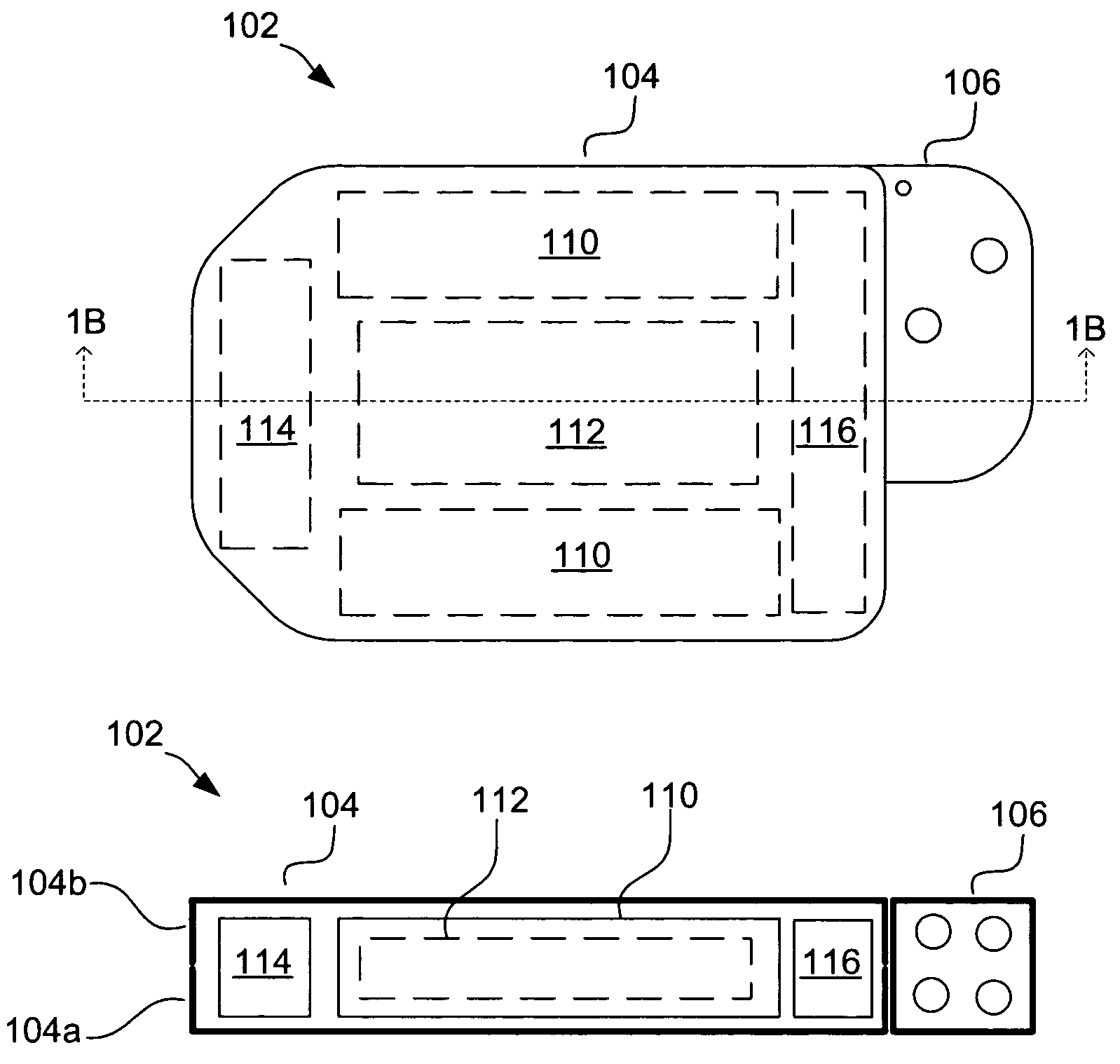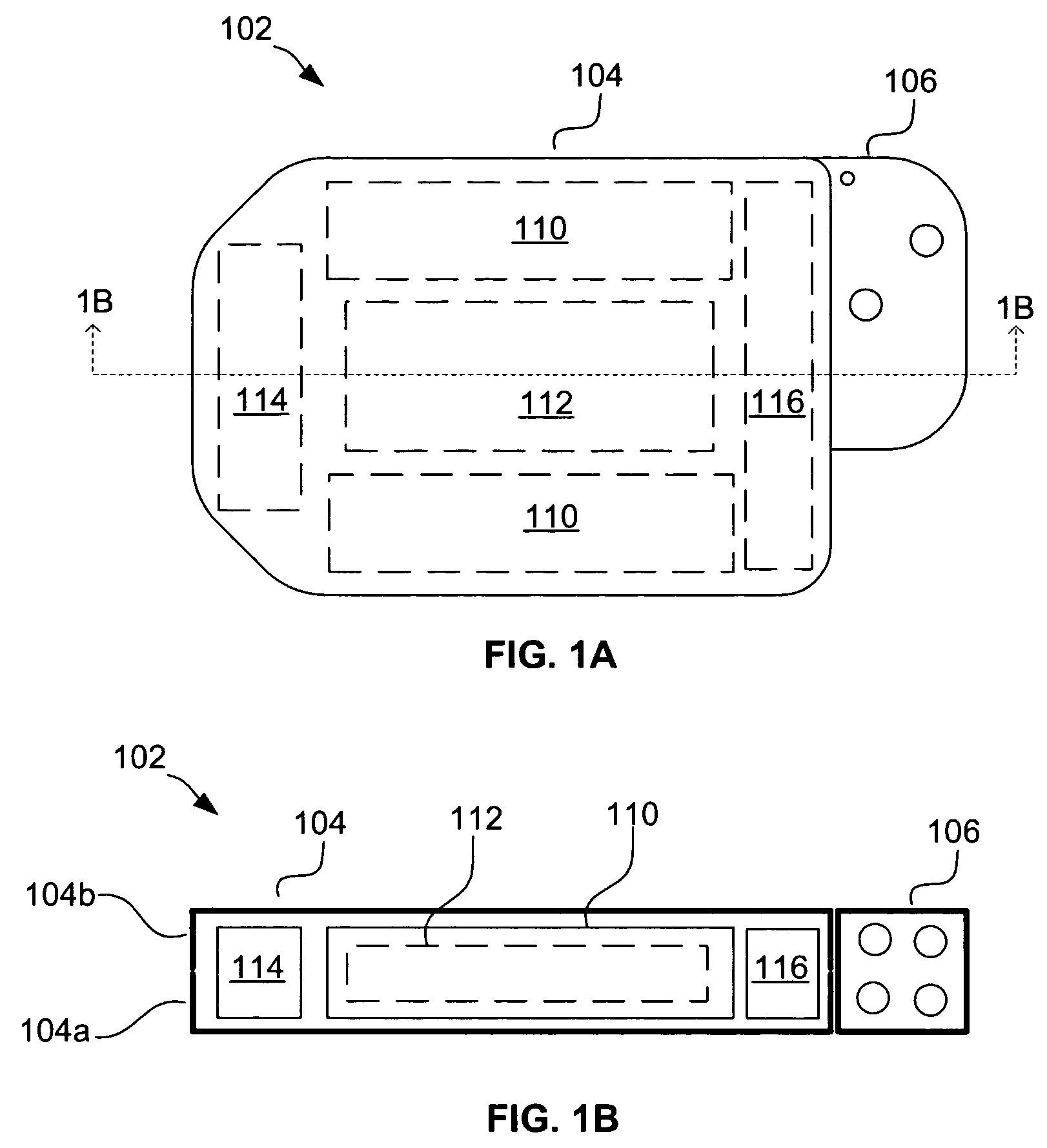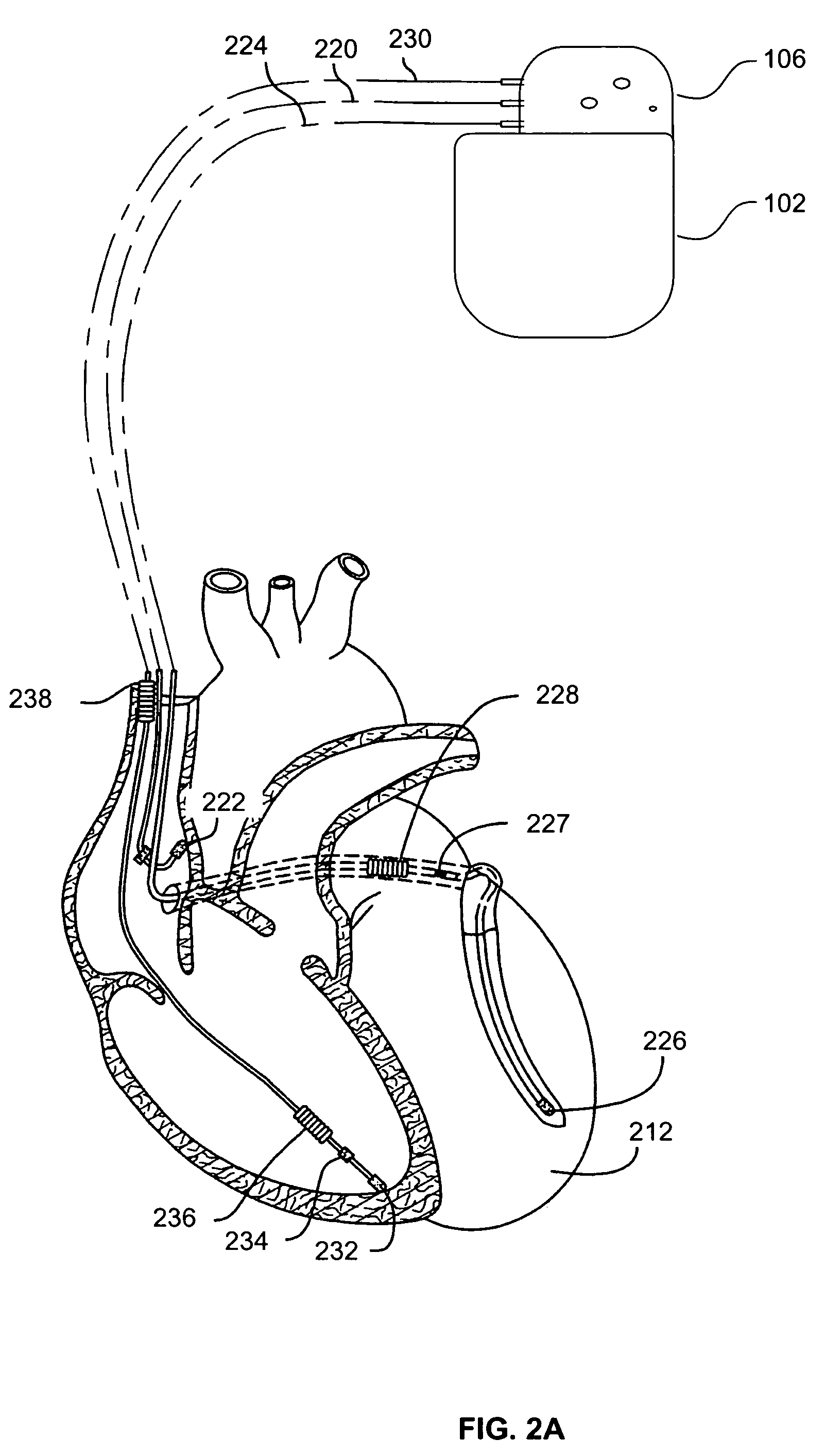Autonomous sensor modules for patient monitoring
a sensor module and patient technology, applied in the field of implantable medical devices, can solve the problems of increasing the development and regulatory costs of the device, increasing the burden on quality assurance, and reducing the battery life of the icd to an unacceptable level, and achieves the effect of little or no
- Summary
- Abstract
- Description
- Claims
- Application Information
AI Technical Summary
Benefits of technology
Problems solved by technology
Method used
Image
Examples
Embodiment Construction
[0025]While the data obtained from implanted sensors may be used by an implanted cardiac device for arrhythmia discrimination, pacing optimization, or the like, such sensor data is often valuable even if it is not used immediately by the implantable device. For example, such sensor data can be stored within the device and then telemetered to an external device which can display the data to a physician and / or analyze the data.
[0026]Embodiments of the present invention enable additional sensing hardware to be added to an implantable device (e.g., a cardiac stimulation device) more quickly and less expensively, with little or no affect on the conventional functions of the implantable device.
[0027]Referring to FIGS. 1A and 1B, an exemplary implantable cardiac stimulation device 102 is shown. The device 102, which may be an ICD, pacemaker or other stimulation device, includes a container housing 104 (also known as a “can”) and a header 106 (also known as a “connector”). Housed within the...
PUM
 Login to View More
Login to View More Abstract
Description
Claims
Application Information
 Login to View More
Login to View More - R&D
- Intellectual Property
- Life Sciences
- Materials
- Tech Scout
- Unparalleled Data Quality
- Higher Quality Content
- 60% Fewer Hallucinations
Browse by: Latest US Patents, China's latest patents, Technical Efficacy Thesaurus, Application Domain, Technology Topic, Popular Technical Reports.
© 2025 PatSnap. All rights reserved.Legal|Privacy policy|Modern Slavery Act Transparency Statement|Sitemap|About US| Contact US: help@patsnap.com



